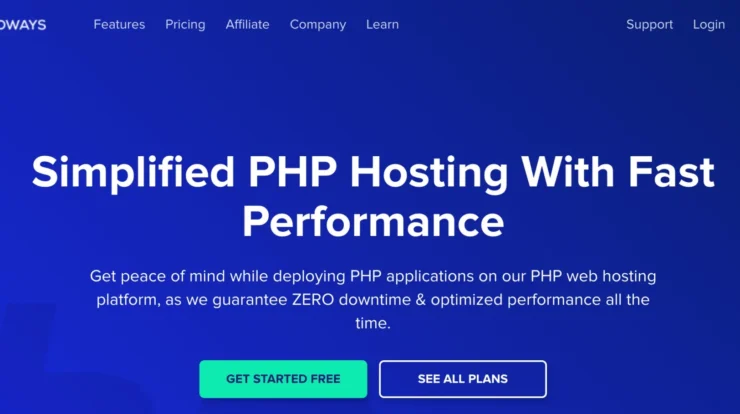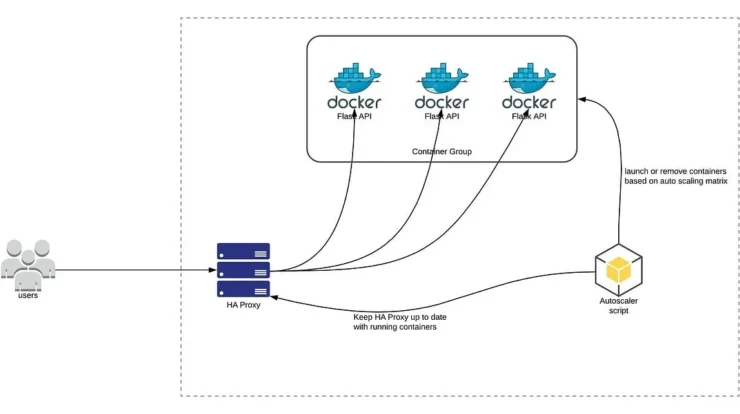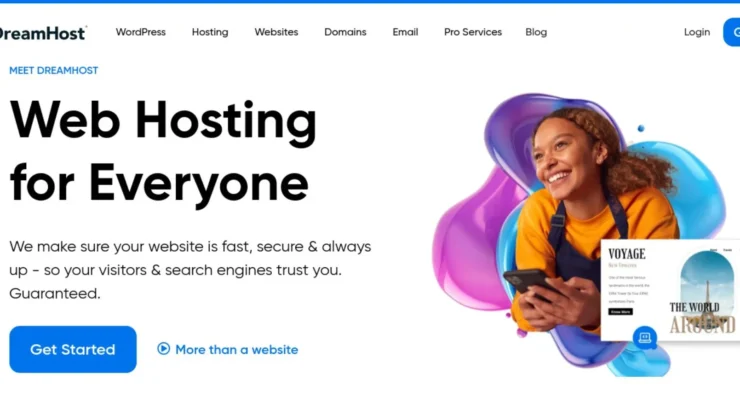
Building a robust and performant React frontend is crucial for delivering a seamless user experience.
However, choosing the right hosting platform for your React application can significantly impact its speed, reliability, and overall scalability.
This becomes even more critical as your application grows and attracts more users.
From handling peak traffic to ensuring consistent loading times, your chosen hosting solution plays a key role in the success of your React frontend.
This comprehensive guide explores the nuances of selecting the best hosting for React applications, examining various options and highlighting their strengths and weaknesses.
Understanding the intricacies of server-side rendering, static site generation, and dynamic loading is vital for optimizing your React frontend’s performance and availability.
Effective hosting solutions empower developers to concentrate on the front-end logic and user interface while handling the complexities of infrastructure.
Choosing the right hosting solution impacts everything from initial page load times to the overall stability of your React frontend.
This exploration of optimal React hosting considers factors like server configurations, CDN integration, and security measures. Finding the perfect match between your project’s requirements and a scalable hosting environment is key for providing a responsive and enjoyable user experience, and this article will help navigate that critical choice.
Whether you’re a seasoned developer or just starting your journey with React, a well-informed choice of best hosting for React frontend can accelerate your project and enhance user satisfaction.
Choosing the Right Hosting Platform for Your React Frontend
Selecting a suitable hosting provider is paramount for the success of any React frontend application, dictating its responsiveness and reliability.
The optimal hosting solution ensures a seamless user experience, regardless of traffic spikes or application complexity.
A robust hosting platform is vital for a React frontend application, accommodating fluctuating user demands and guaranteeing consistent performance.
This involves considering factors like server responsiveness, uptime guarantees, and scalability options.
Choosing the best hosting for React frontends hinges on understanding the specific needs of your application.
A poorly chosen hosting environment can negatively impact loading times, leading to frustration and a decline in user engagement.
A strong, reliable hosting provider must offer resources capable of handling the anticipated traffic patterns for your React application.
The performance of your React application directly correlates with the speed and efficiency of the underlying hosting infrastructure.
Modern React applications often employ complex functionalities, requiring hosting platforms with sufficient resources to support them.
For applications utilizing sophisticated state management or intricate component interactions, a powerful hosting service is essential to maintain smooth operation.
This translates to optimized loading speeds and a consistently positive user experience.
Choosing the best hosting platform for React involves careful consideration of your specific requirements and future growth potential.
Factors like the intended user base, anticipated traffic volume, and the project’s long-term objectives must be meticulously assessed.
A reliable hosting solution allows your React frontend application to adapt to changing demands effectively, preventing performance bottlenecks and ensuring a smooth, uninterrupted experience for all users.
The selection of the ideal hosting platform for your React frontend, therefore, is crucial for scalability, performance, and overall user satisfaction.
Optimizing your React application’s backend and frontend often overlaps and impacts each other, and choosing hosting wisely is instrumental in delivering a top-tier user experience.
A fast and responsive hosting solution is essential to provide the best possible user experience, a key success metric for any React application.
Server-Side Rendering (SSR) and its Impact on Hosting
Server-side rendering (SSR) plays a pivotal role in the performance of React frontend applications hosted on various platforms. SSR processes React components on the server, generating complete HTML before sending it to the client.
Employing SSR significantly enhances initial load times for users, as the browser receives a fully rendered page, rather than a JavaScript-driven build. This leads to a quicker and more engaging user experience, especially for applications with intricate components.
However, integrating SSR with a React application requires careful consideration of the hosting infrastructure. Choosing a hosting provider that supports SSR efficiently is essential to avoid performance bottlenecks.
Certain hosting solutions are better suited to handle the increased server-side processing demands of SSR. Platforms that offer robust server resources and optimized configurations are vital for maintaining application responsiveness during high traffic periods.
Choosing a hosting provider with robust server resources is crucial for optimal performance when employing SSR for React frontend applications. This is especially true for dynamically updating content that necessitates multiple round trips to the server.
The choice of hosting provider for React applications using SSR hinges on the specific performance demands of the application and the volume of concurrent requests. Optimized solutions are needed to handle the increased computational load on the server while maintaining smooth loading times for users.
A hosting platform with scalability in mind is necessary to accommodate the changing needs of an application, whether it’s a small startup or a large-scale enterprise. Efficient hosting configurations are crucial for achieving desired levels of responsiveness and performance, especially when employing server-side rendering for your React frontend.
For applications prioritizing initial page load performance, SSR can be a compelling strategy. However, it’s essential to consider the hosting resources required to support this approach, and select a solution that provides adequate server processing power and scalability.
In contrast to client-side rendering, which builds the frontend entirely in the browser, SSR allows for a significant initial performance boost in the React frontend. This means your users will get a fully functional page much faster, leading to a positive impression and increased engagement. Choosing the right hosting strategy, therefore, becomes crucial for effectively utilizing SSR and providing a user-friendly experience. Choosing the correct React hosting solution is critical to maintain smooth performance even with heavy traffic. The choice directly impacts the quality and consistency of user experience across different platforms. Many hosting providers offer various configurations optimized for SSR, allowing developers to find the right balance between performance and cost.
The overall complexity of the application and the volume of data that needs to be rendered server-side further dictates the choice of hosting infrastructure for React frontends. This intricate interaction necessitates meticulous planning and selection to optimize the entire user experience.
Scalability and Performance for React Frontend Hosting
Scalability is paramount when choosing a hosting solution for a React frontend application, especially as the application’s user base grows and the demands on the front-end increase.
A scalable hosting platform must adapt to fluctuating traffic, ensuring a seamless user experience, even during peak usage periods or sudden surges in user activity.
A poor choice of hosting can lead to sluggish performance, impacting user satisfaction and potentially driving users away.
This necessitates careful consideration of factors such as server responsiveness, load balancing mechanisms, and the ability to seamlessly add more resources when needed, all critical aspects for a robust React frontend hosting solution.
Choosing a hosting provider that can handle spikes in traffic is crucial for a positive user experience. A hosting platform should not bottleneck the application’s performance during periods of increased activity. This aspect is especially important for React applications, which often feature dynamic content, potentially creating larger demands on the server compared to static content.
A crucial aspect of scalability involves load balancing. This distributes incoming traffic across multiple servers, preventing any single server from becoming overloaded. With proper load balancing, the hosting service ensures consistent performance and maintains responsiveness to a large number of concurrent users, a vital factor for any successful React frontend application.
Robust hosting for React frontend projects requires adequate server resources. The hosting platform should offer the flexibility to quickly and easily add more CPU cores, memory, and storage capacity as required, enabling your application to handle growing user demands. This scalable architecture is essential to avoid bottlenecks and maintain consistent performance, crucial for the optimal user experience.
Performance is inextricably linked to scalability. Fast loading times are essential for user engagement. A well-performing React frontend hosting solution should prioritize minimizing latency, reducing the time it takes for resources to be delivered to users’ browsers. This directly influences user satisfaction and potentially enhances search engine rankings by satisfying SEO requirements.
The right hosting provider for your React frontend application should offer features to monitor performance metrics and provide insights into how the application is behaving under load. Tools for tracking server response times, error rates, and other key performance indicators will help to proactively identify and address any potential bottlenecks, ensuring consistent and optimal performance.
Effective caching mechanisms are also key to performance and scalability, reducing the amount of data that needs to be fetched from the server each time a user interacts with the application. A properly configured caching strategy within the React frontend hosting environment can significantly enhance performance, leading to quicker loading times and a smoother user experience, further supporting the development of a successful and performant application. This is critical for maintaining a positive user experience and enabling the application to adapt seamlessly to increases in traffic and user engagement.
Choosing the best hosting for React frontend, therefore, also involves evaluating its scalability and performance capabilities. The ability to handle future growth while maintaining a fast, responsive user experience is a critical aspect of a successful project. A capable hosting provider recognizes and supports these aspects.
Scalability and Performance for a Robust React Frontend
A crucial aspect of choosing the best hosting for React frontends is ensuring scalability, as your application’s user base and data volume grow.
Scalability involves the ability of your hosting solution to handle increasing demands without significant performance degradation.
This is particularly important for React applications, as they often leverage dynamic data fetching, complex UI components, and potentially large datasets, all contributing to the computational load.
A good hosting solution for React will employ robust infrastructure capable of horizontal scaling, allowing you to easily add more resources (servers, processing power, memory) as your application grows and traffic increases.
This adaptability is key to maintaining optimal performance and ensuring a seamless user experience, even during peak hours or when there are surges in traffic.
For instance, consider a React application that displays real-time stock market data. A poorly scaled hosting environment might experience lag or timeouts, impacting the user experience and potentially causing data inaccuracies.
In contrast, a hosting provider optimized for React applications will have servers that can quickly adapt to increased demands, providing consistent response times and a fluid interaction with the data.
Furthermore, this scaling must be achieved efficiently without significant increases in hosting costs. Choosing a hosting solution with a pay-as-you-go model or automatic scaling options is advantageous, allowing you to control costs and ensure that your hosting expenses remain aligned with your needs.
For React applications that rely on complex algorithms or computationally intensive tasks, a hosting provider that offers dedicated resources can be essential for performance. This dedicated approach can provide better control and response times compared to shared hosting environments.
Ultimately, scalability is a vital consideration when selecting the best hosting for React frontend projects. A scalable hosting solution allows for the growth of your application and ensures a consistently positive user experience as your project expands.
Choosing the optimal hosting solution for your React frontend is crucial for delivering a seamless user experience and ensuring the performance and scalability of your application.
This article highlighted the importance of factors like speed, reliability, security, and cost-effectiveness when selecting a hosting provider for a React application.
From cloud-based solutions to managed hosting platforms, various options cater to diverse needs and budgets. This decision impacts everything from page load times to the overall user experience, directly influencing how your application performs.
The best hosting for React frontend, therefore, must balance these competing priorities to provide a robust foundation for application development and deployment. A poorly chosen hosting environment can significantly impact the responsiveness, accessibility, and even the security of your React application.
In conclusion, careful consideration of your specific requirements and resources is paramount when making your final decision on hosting for a React frontend. Implementing the best hosting for React frontend can be the difference between a user-friendly, high-performing application and a frustrating, slow, and ultimately unsuccessful one. Whether you’re a solo developer or part of a large team, choosing the right hosting provider will streamline your workflow and ensure your React application performs at its optimal level. By understanding the nuances of different hosting platforms and prioritizing factors such as server performance, scalability, and security, you can select a hosting solution that enhances the entire user journey and aligns perfectly with your project’s needs. Ultimately, the right hosting for React frontend empowers you to focus on creating innovative features and a compelling user experience, knowing the technical infrastructure is dependable and efficient.






